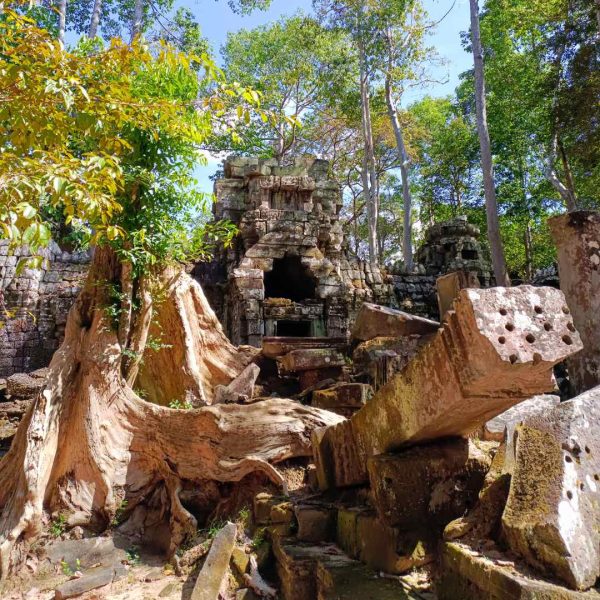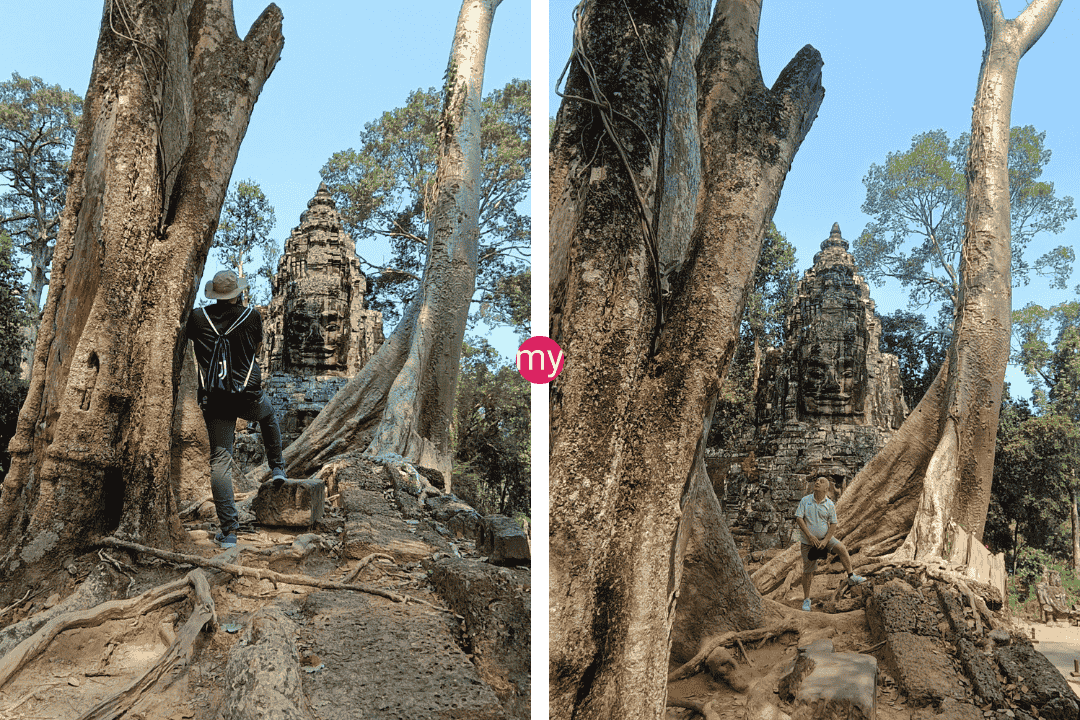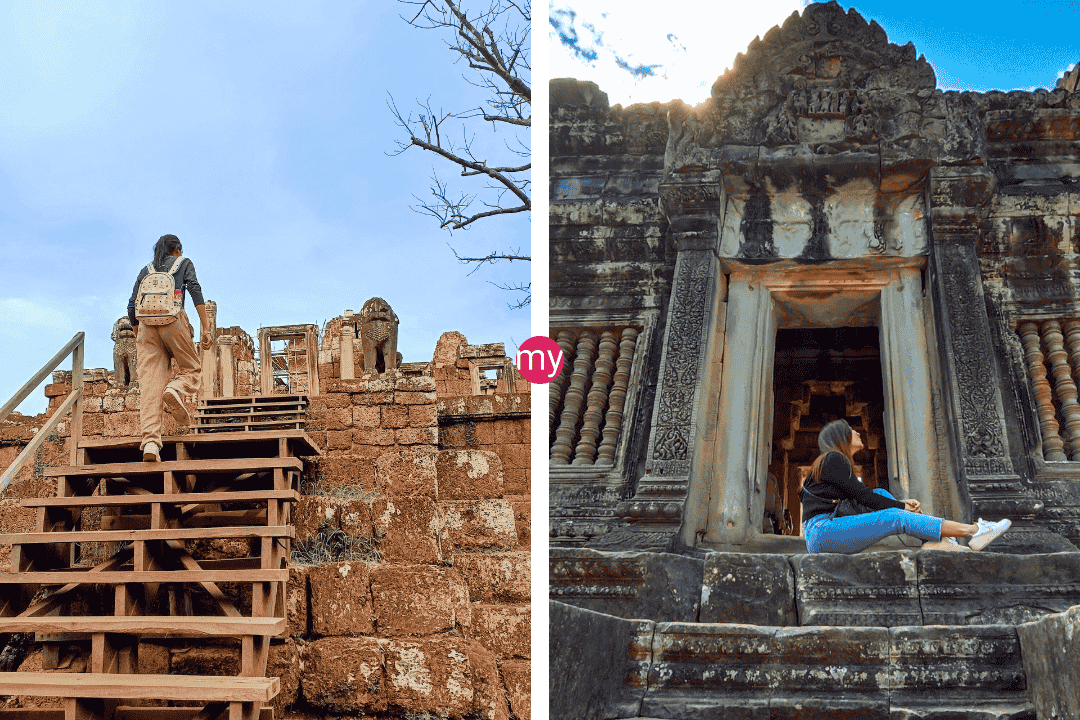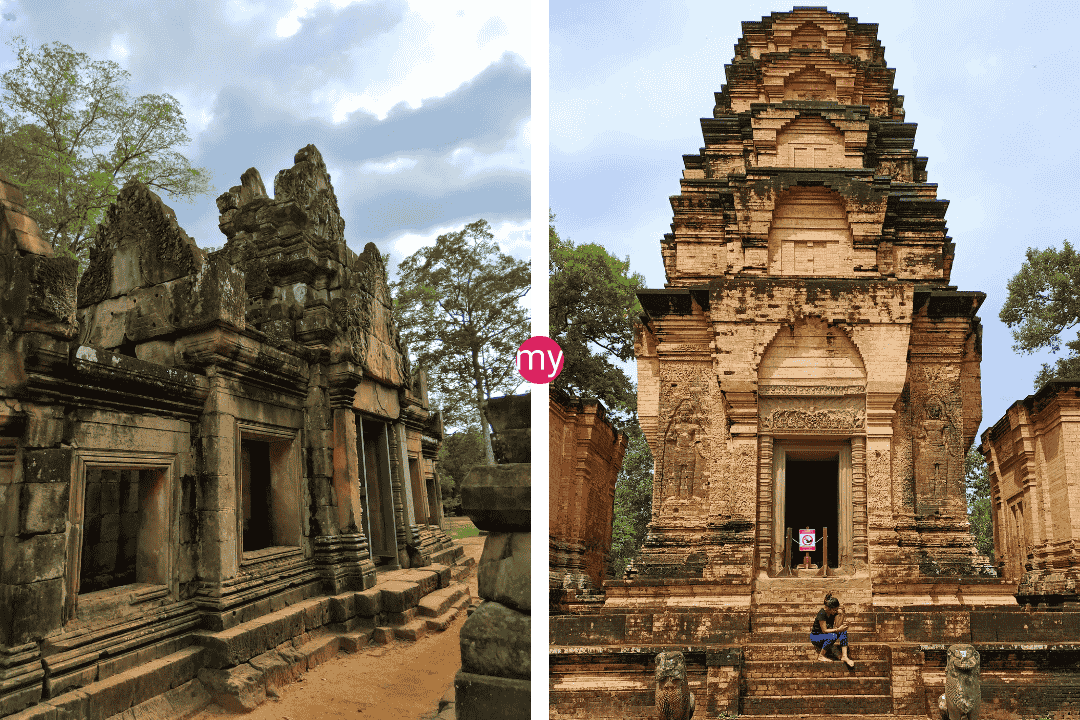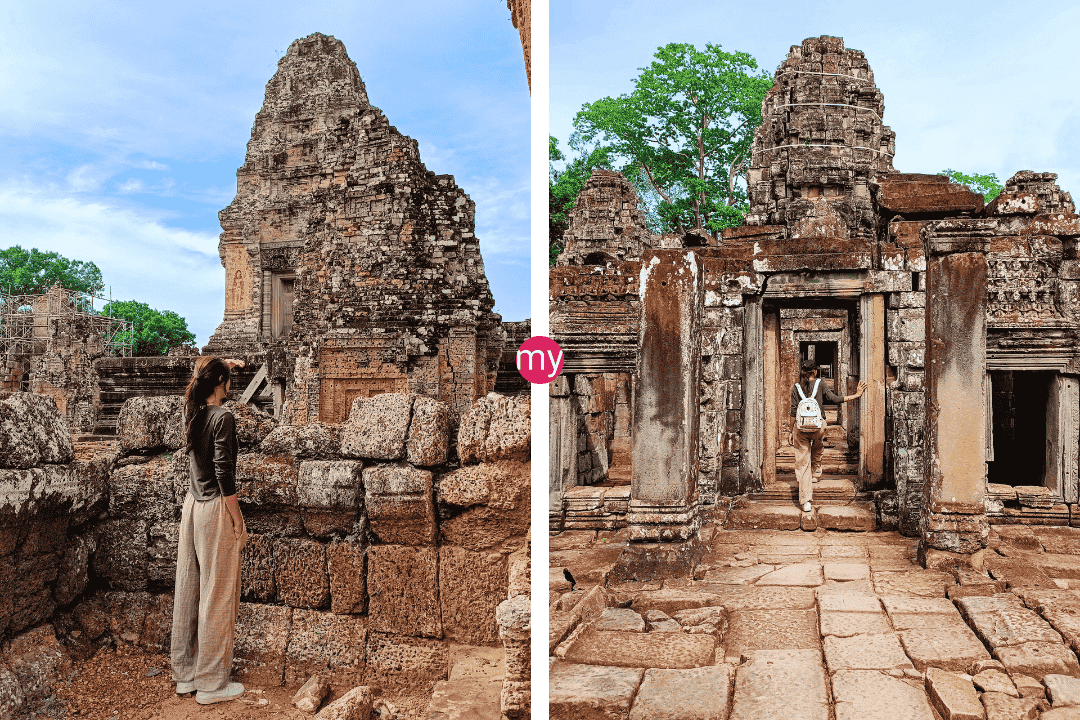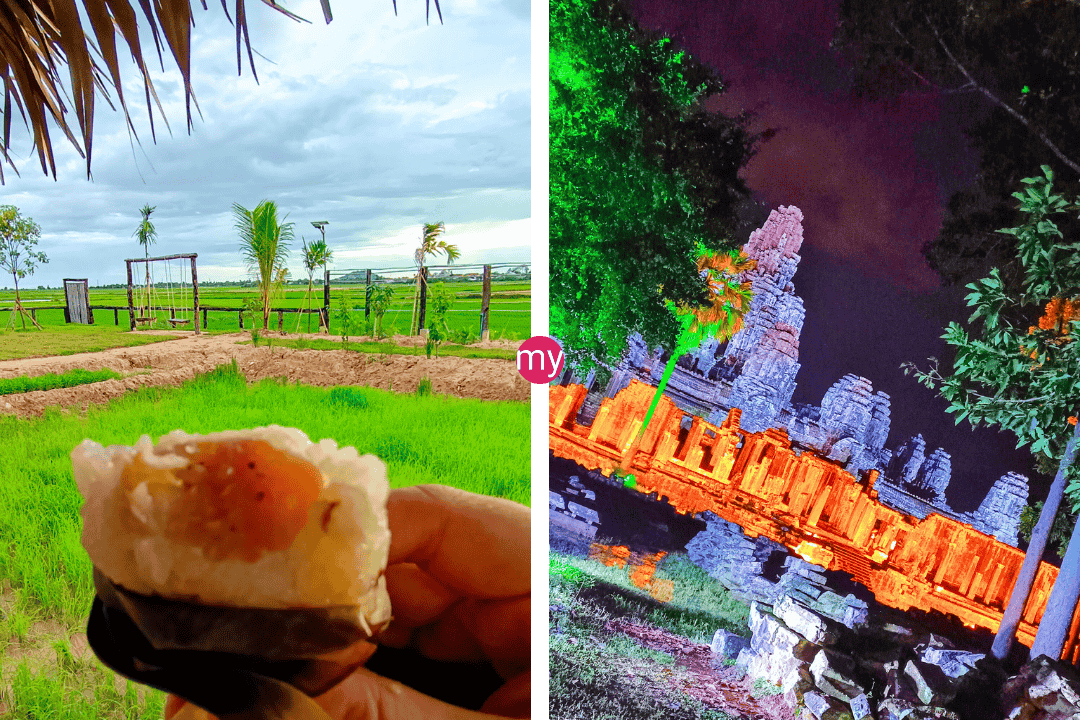A Chronological Journey into Khmer History - Exploring Khmer Culture on a Private Siem Reap Tour
What are the top temples and sites to see in Siem Reap for learning about Khmer history?
Siem Reap offers countless temples and historic sites that illuminate Cambodia’s ancient Khmer civilization. While Angkor Wat tends to dominate most itineraries, there are many other fascinating destinations to explore on a private tour focused on heritage. Here are seven must-see temples and sites for delving into Khmer history in Siem Reap:
- Bayon Temple – Located at the heart of Angkor Thom, the Bayon’s iconic carved stone faces peering out from its many towers make it one of Angkor’s most intriguing temples. Learn about how it was constructed as a state temple for Jayavarman VII and the rich symbolic imagery and bas-reliefs depicting historic battles and events.
- Ta Prohm – Left largely unrestored, the photogenic and atmospheric ruins of Ta Prohm exemplify the blending of human artistry and natural jungle. Wander through haunted corridors tangled with giant tree roots and meditate on the temporal nature of human civilization.
- Banteay Srei – Considered Angkor’s crown jewel, this petite pink sandstone temple is ornately decorated with intricate carvings dedicated to Shiva. Contemplate the skill and artistry of Cambodia’s ancient stonemasons.
- Phnom Bakheng – Perched on a hill, Phnom Bakheng was built as a temple mountain with multiple tiers reminiscent of a pyramid. Catch the sunset here with sweeping views over Angkor Wat and the surrounding forest canopy.
- Terrace of the Leper King – Part of the royal city of Angkor Thom, see fascinating stone carvings like the eerie Terrace of the Leper King, believed to depict Jayavarman VII.
- Preah Khan – One of the largest temples of Angkor, Preah Khan combines Hindu and Buddhist imagery. Wander the mazelike ruins uncrowded and soak up the mystical atmosphere.
- Roluos Temples – Dating to the early Angkor period, these temples mark the beginning of classical Khmer architecture, including Bakong, the first temple mountain.
The Evolution of Khmer Temple Architecture
By touring a range of temple sites spanning different eras across Siem Reap, you can witness the remarkable evolution of Angkorian architecture and artistic style. Early temples like Bakong were relatively simple brick towers evolving from Hindu origins.
Later, during the height of the Khmer Empire under rulers like Suryavarman II and Jayavarman VII, temple design achieved new heights of complexity and grandeur. Dramatic innovations included:
- Intricately carved bas-reliefs depicting mythological and historic scenes
- Soaring towers and prangs with long sloping wings
- Vast temple cities and complexes enclosed by walls and moats
- Elaborate temples “mountains” with multiple ascending tiers
- Mysterious faces carved into towers, perhaps representing devaraja or the “god-king”
- Galleries and libraries for sacred texts and learning
- Ornate colonnaded entry pavilions (gopuras)
- Sprawling palace cities augmented with temples, reservoirs, and infrastructure
Wandering sites like the soaring temples of the Roluos Group or those found in Angkor Thom provides a fascinating overview showcasing how Khmer architects mastered stone construction to build increasingly ambitious, imposing structures.
Understanding this architectural evolution across successive dynasties helps unlock the skill, aesthetic vision, and engineering accomplishments of the ancient Khmers. A private Siem Reap tour allows you to connect the “dots” between seminal temple sites and appreciate the ingenuity of one of history’s greatest civilizations.
What sites in Siem Reap best showcase Khmer artistic mastery?
While the sheer size and scale of many Angkorian temples prove imposing, the real ingenuity is found in their ornate artistic detailing carved into sandstone surfaces. Three temples not to miss for experiencing unmatched Khmer artistry on a Siem Reap tour are:
Banteay Srei – Even after a millennium, the pink sandstone bas-reliefs gracing Banteay Srei remain remarkably crisp and vivid. Foliage motifs, mythical lions, dancing apsaras, intricate pediments – no surface is left unadorned. This small but extremely refined temple exemplifies the pinnacle of Khmer artistic expression.
Bayon – Scan the grand porches of Bayon found at Angkor Thom’s center to discover over 200 giant stone faces emanating serenity. These enigmatic visages gazing out in all directions are only a fraction of the exquisite bas-reliefs found throughout Bayon chronicling historically and culturally significant scenes from Khmer civilization.
Angkor Wat – The most iconic and revered of Angkor’s temples, Angkor Wat dazzles with artistic mastery. The 800 meter-long series of intricate bas-reliefs along its outer gallery walls represent the pinnacle of historic Khmer bas-relief art. Study the Churning of the Sea of Milk, Battle of Kurukshetra, Judgment of Yama, and other detailed vignettes for insights into Angkorian culture and Hindu mythology.
Innovations in Khmer Sculpture and Bas-Relief Design
Several artistic techniques and motifs characterize the incredible stone artwork of Angkor’s temples. By becoming familiar with these styles and themes, you gain a deeper understanding when admiring Siem Reap’s ancient temples. Distinctive elements of Khmer artistry include:
- Apsaras – Celestial dancing female figures representing nymphs or divine spirits. Their sinuous gestures and elaborate ornamentation reflects the Khmer ideal of feminine grace and beauty.
- Lotus blossoms – Stylized lotus flowers often adorn pillars, pediments, and bas-reliefs. The sacred lotus held symbolic importance in Hindu and Buddhist iconography.
- Naga – Stone serpents with multiple cobra heads winding across surfaces. In Khmer mythology, the multi-headed naga was associated with water and fertility.
- Asura – Figures depicted in dynamic combat postures representing demons or divine beings from Hindu texts. Their fierce energy contrasts with serene Buddha images.
- Pediments – Lavishly carved triangular frames adorning entryways. Pediment carvings showcase epic battles between asuras, nagas, lions, and other mythic beasts.
- Devata – Ethereally beautiful minor female divinities residing in the temple. They offer guidance to visitors in reaching enlightenment.
- Moulded towers – Laterite stone towers sculpted to mimic the shape of lotus buds or rising flames, symbolizing stages of enlightenment.
Admiring the diversity of themes and sophistication of techniques used in Angkorian sculpture offers insight into the rich spirituality, folklore, and aesthetic ideals of their creators. Even without fully understanding the epics and Buddhist/Hindu narratives depicted, one can easily appreciate the ornate majesty of Khmer artistic expression.
What locations in Siem Reap provide the best sunset views?
After a day spent temple trekking, cap off your private Siem Reap tour by watching the sunset from a scenic viewpoint or rooftop. Several prime spots around the city offer amazing backdrops as nightly shadows slowly envelop the sprawling Angkor ruins. Top options for sunset viewing include:
Phnom Bakheng – The most popular sunset spot, this temple hill offers unobstructed views across Angkor Wat and the Western Baray reservoir. Arrive early to secure a viewing platform. The silhouette of Angkor Wat at dusk is unforgettable.
Phnom Krom – Gaze out over the vast Tonle Sap lake from this hilltop Hindu temple marking the southern extent of Angkor Wat. See the distant skyline of downtown Siem Reap painted gold by the sinking sun.
Pre Rup – Catch a panorama of Eastern Baray and grassy countryside from this Angkorian-era mountain temple. Follow the steep stairs to the upper platform for the full 360° vista.
Sras Srang – Not a temple but a royal bathing pool, Sras Srang makes a serene and usually uncrowded sunset spot. Sit along its sandstone banks and watch the glowing reflection of the waning sun.
FCC Angkor Rooftop – Toast to an amazing day of sightseeing with sunset drinks on the stylish rooftop terrace of this popular bar/restaurant.
Sofitel Angkor Phokeethra Pool Cafe – Another chilled out option is to relax poolside at this five-star resort and watch the sky fade to pinkish-orange hues behind silhouetted temples.
Perched atop a temple or viewpoint, bask in the magical ambiance at sunset when the crowds dissipate and the outlines of Angkor Wat and other ruins glow against the dusky skies. Let your private guide know your preferred sunset style to end each day on the perfect note.
What sites in Siem Reap showcase everyday life and culture of modern Khmer people?
While Angkor’s temples anchor most itineraries, taking time to experience contemporary Khmer culture completes any Siem Reap tour. The Cambodian people have endured many hardships yet retained a spirited outlook and friendliness. Here are top spots for cultural connections:
Phsar Leu Market – Wander the warren of stalls at this lively local market, browsing silk fabrics, incense, spices, and souvenirs. Practice your bargaining skills and mingle with locals doing their regular shopping.
Artisans Angkor Workshops – Meet master craftspeople at workshops where traditional Cambodian handicrafts are carved, molded, lacquered and woven. Stone and wood carving are especially impressive to observe.
Tonle Sap Floating Villages – See waterbound communities of fisherfolk and their way of life. Visit floating schools, markets, and homes during a relaxing paced boat tour of Tonle Sap Lake.
Khmer Ceramics Center – Try your hand at the traditional pottery wheel or decorative lacquering at this creative center, supporting and training local artisans to preserve Kambuja ceramic arts.
Cambodian Cultural Village – This family-friendly open-air museum depicts various aspects of cultural life through miniature villages, performances, and displays on clothing, architecture, religion, martial arts, and more.
Les Artisans d’Angkor Workshops – Similar to Artisans Angkor, but smaller-scale workshops in a village-like setting where you can watch craftspeople carving, painting, and weaving. Shop for fair trade silk, carvings and home decor.
Peel back the tourism veneer for authentic interactions with Khmer people, proud to share their cultural traditions and daily life routines with interested visitors. Let your private guide design activities and excursions to fit your interests off the main tourist track.
What sites allow you to experience Khmer faith and spiritual beliefs?
To comprehend Cambodia’s living history means understanding the religious influences that have shaped its culture. While Hinduism originally informed Angkor’s early temple designs, Theravada Buddhism has long been the dominant faith of the Khmer people. Highlights for connecting with Cambodia’s deeply spiritual side include:
Angkor Wat – Built as a Hindu temple yet later converted to a Buddhist place of worship, Angkor Wat blends religious symbolism. Marvel at carvings depicting legends from the Hindu epics, the Mahabharata and Ramayana.
Bayon Temple – At the heart of this temple city, 200 giant carved faces keep watch with serene smiles. Some believe these represent the “god king” Jayavarman VII, exemplifying the Hindu concept of devaraja.
Wat Thmei – Constructed to memorialize victims of the Khmer Rouge, this Buddhist temple and stupa grounds provide a space for solemn contemplation.
anga Commune – Rising early to offer alms to the procession of saffron-robed monks helps you connect to this cornerstone of Buddhist devotion in Cambodia.
Banteay Srei Butterfly Center – Clearing forest near Banteay Srei, local monks have created a conservation center where you can see native butterflies while learning about Buddhism’s emphasis on environmental protection.
Les Artisans d’Angkor Silk Farm – Tour the serene tropical grounds where silk worms are cultivated and natural dyes derived from native plants and minerals. Silk weaving has spiritual resonance in Buddhism.
From humble roadside shrines to imposing Angkor ruins, Cambodia’s temples and sites allow one to tangibly trace the ebb and flow of religious ideologies that have shaped its cultural fabric over the centuries.
What sites around Siem Reap provide views of the iconic sunrise at Angkor Wat?
Watching the day’s first light slowly illuminate the legendary silhouette of Angkor Wat is an iconic Siem Reap experience. However, the prime sunrise viewing spot within the temple often gets extremely crowded. For more relaxed viewing, consider catching the dawn from:
Phnom Bakheng – The classic alternative where your guide must arrive very early to secure a position. The hilltop vista lets you see the sun climb directly behind Angkor Wat in the distance.
Sras Srang – Easily accessed across from Angkor Wat, Sras Srang’s lakefront viewing means fewer crowds. Reflective waters make for exquisite photos.
Pre Rup – Another hilltop temple viewpoint east of Angkor Wat. Get the big picture panorama of the landscape waking up bathed in golden light.
Siem Reap River – Escape congestion by cruising out onto the river in a traditional wooden longtail boat and watching daybreak over Angkor unfold gracefully from the water.
Jaya House River Park – Have your guide drive you 10 minutes from downtown to this riverside hotel’s chilled park space. Relax amid tropical gardens for a crowd-free and unique angular perspective.
Angkor Reach Golf Resort – Make the 15-minute trip to this resort’s open course with sightlines to Angkor Wat. Sunrise photos get a grassy foreground. Return for breakfast by the pool after avoiding temple crowds.
Don’t forgo seeing Angkor Wat at sunrise in person during your stay. But beat the throngs on busier days by strategically scouting lesser-known viewpoints with your private guide’s insider knowledge. Relax and compose memorable photos as the first light sparkles over Angkor’s spires.
What are the most photographer-friendly temple sites in Siem Reap?
Angkor’s temples offer boundless potential for visually striking photographs to document your journey. But some sites lend themselves better for photography than others based on lighting, scale, and complexity. For pro-worthy pics, top temples in Siem Reap include:
- Ta Prohm – Intricately carved walls blanketed in gnarled banyan roots make fantastically textured images demonstrating nature’s resilience.
- Bayon – The massive stone faces peering out from every angle are perfect subjects to encapsulate Angkor’s mystery. Creative framing adds drama.
- Banteay Srei – Elaborately carved bas-reliefs covering its pink sandstone surfaces require careful close-up framing but result in intricate fine-art photos.
- Beng Mealea – Far from Siem Reap lies this still largely unrestored temple. The crumbled walls make great textures to foreground your self-portraits or models.
- Pre Rup – Rise early to photograph Pre Rup’s central tower and sloping tiers silhouetted at sunrise or sunset. The orange light creates striking shadow play.
- Ta Som – Flanked by four entry gates and surrounded by guardian lions, this petite temple framed by trees photographs beautifully.
- Sras Srang – The elegant stone landing steps descending into Sras Srang’s pool reflect perfectly when the waters are still, especially at sunrise.
Your guide knows the optimal times and exact spots for the best photos at any given temple. Tell them your photographic goals, and they’ll take you to the most visually rewarding places under optimal lighting conditions.
Key Takeaways:
- Early Angkorian temples like Bakong evolved from simple brick Hindu towers into later masterpieces.
- Under influential kings, temple design scaled new heights of complexity with soaring towers, ornate bas-relief carvings, and sprawling walled cities.
- Khmer artisans developed innovative sculpting techniques still visible across temple sites like Banteay Srei, Angkor Wat, and Bayon.
- Seeing the chronological architectural progression demonstrates the lost civilization’s sophisticated engineering capabilities.
- A tailored private tour connecting the dots between seminal temples provides an immersive history lesson.
In Conclusion
Tracing the trajectory of Angkorian architecture across temples from different dynasties paints a vivid picture of the Khmer Empire’s cultural evolution. Witnessing the ingenuity invested in each structure provides deep appreciation for the accomplishments of this advanced ancient society. A customized Siem Reap tour focused on this chronology brings Cambodia’s history to life.
Featured
-
Quick ViewRead moreAngkor Wat tours
Angkor Wat Half Day Sunset Tour | Angkor Wat Afternoon Tour [3 Temples, 2 Angkor Gates, 1 Sunset. 0 Stress]
From: $22Rated 0 out of 5 -
Quick ViewRead moreAngkor Wat tours
Private Angkor Wat Small Circuit Tour | Angkor Wat, Bayon, Prasat Preah Palilay, Victory Gate, Prasat Chau Say Tevoda, Ta Keo, and Ta Prohm—every stop is a showstopper.
From: $24Rated 0 out of 5 -
Quick ViewRead moreAngkor Wat tours
Late Morning Angkor Tour | Best Ta Prohm and Angkor Thom tour with late morning start [With Monk Blessing] and Angkor Wat before Sunset
From: $22Rated 0 out of 5 -
Quick ViewRead more2 Days Action
2 Days in Angkor Wat | See TWICE as Many Temples as Regular Tours (While Others Miss Half)!
From: $124Rated 0 out of 5 -
Quick ViewRead moreAngkor Wat tours
Private Ta Nei Temple Tour | Early Morning Temple Visit, Zipline and Authentic Lunch with Pre Rup and Ta Prohm Temple
From: $124Rated 0 out of 5
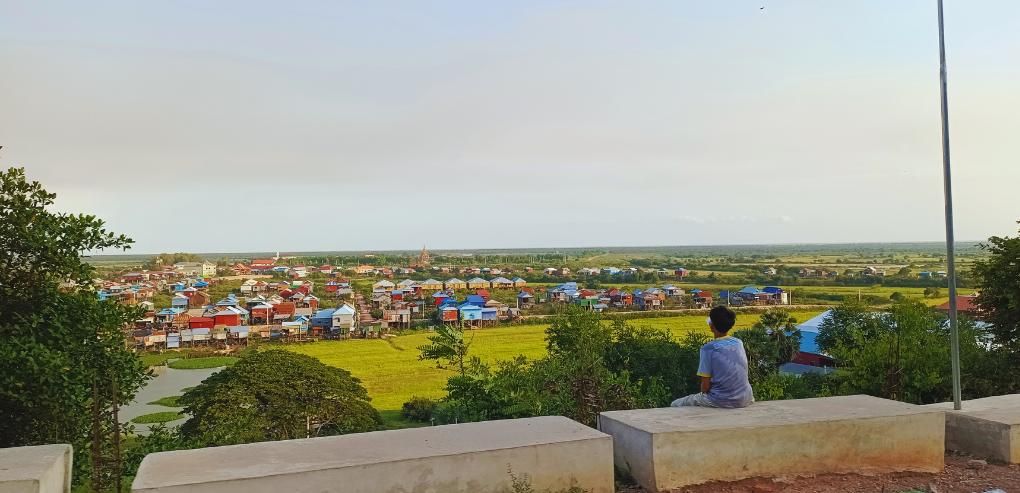
![Angkor Wat Half Day Sunset Tour Angkor Wat Afternoon Tour [3 Temples, 2 Angkor Gates, 1 Sunset. 0 Stress]](https://mysiemreaptours.com/wp-content/uploads/2025/05/Angkor-Wat-Half-Day-Sunset-Tour-Angkor-Wat-Afternoon-Tour-3-Temples-2-Angkor-Gates-1-Sunset.-0-Stress-600x600.jpg)
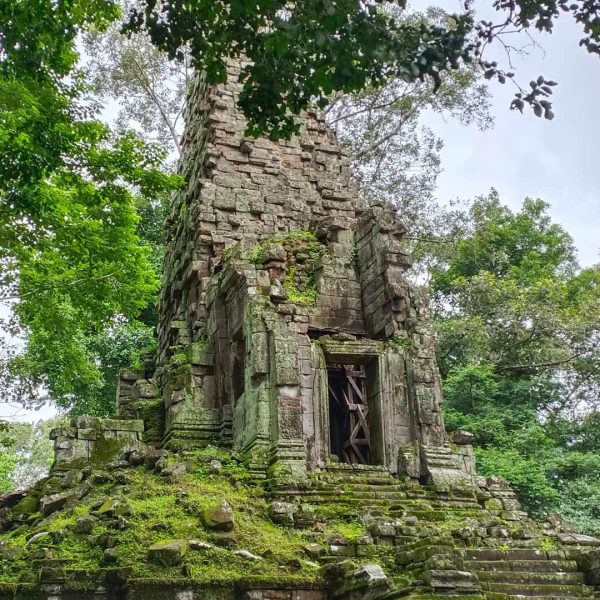
![Late Morning Angkor Tour Best Ta Prohm and Angkor Thom tour with late morning start [Lunch at Khmer home and Monk Blessing] and Angkor Wat before Sunset](https://mysiemreaptours.com/wp-content/uploads/2025/04/Late-Morning-Angkor-Tour-Best-Ta-Prohm-and-Angkor-Thom-tour-with-late-morning-start-Lunch-at-Khmer-home-and-Monk-Blessing-and-Angkor-Wat-before-Sunset-600x600.jpg)

